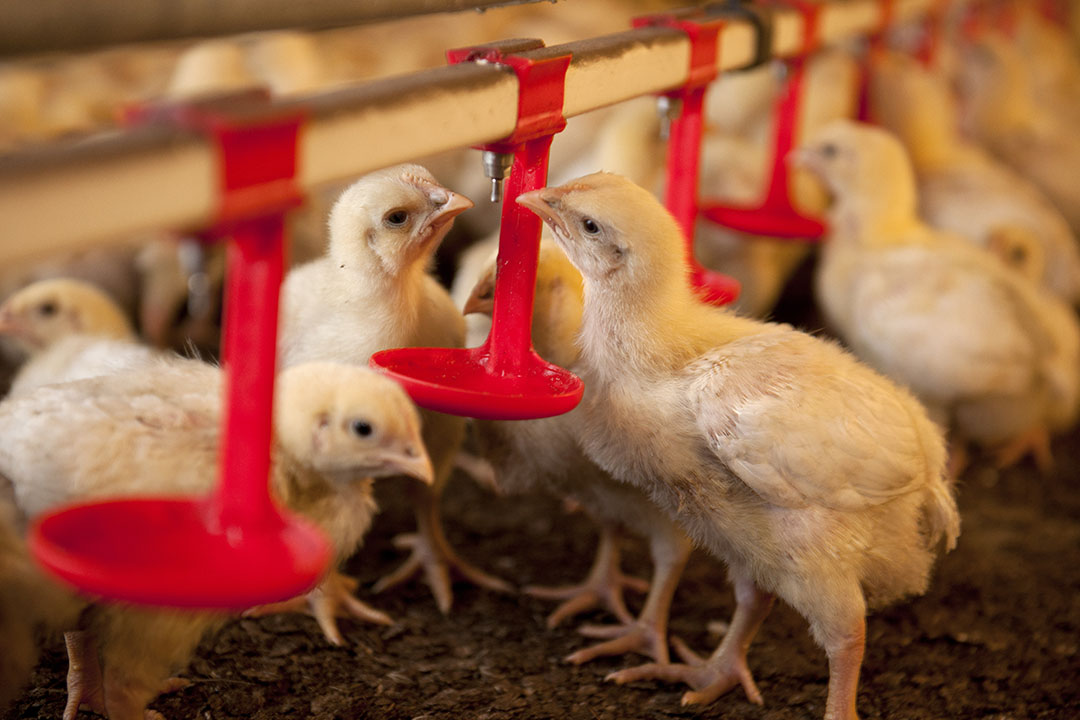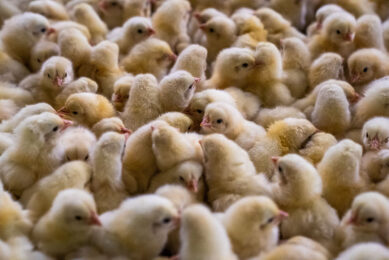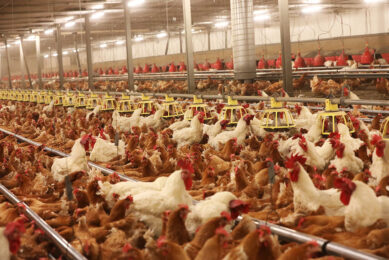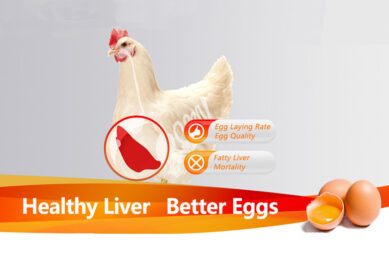Reducing poultry feed costs with enzyme supplements

Enzyme supplementation typically costs around US$?2.0 per tonne of feed. However enzyme supplementation can reduce the feed costs of broilers by up to US$?4.0 -11.0 per tonne, for layers up to US$?9.8 per tonne, and the feed cost per 1000 kg of eggs produced can be reduced by US$?21.2 per tonne.
Several types of enzymes are commonly used in poultry feeding programmes, either individually or in combination. Each enzyme has a specific role in feed digestion:
- Amylase: This enzyme is produced in small amounts in the body and should therefore be provided from external sources to enhance starch digestion. When this enzyme is used in the diet, there will be an around 3-5% increase in the feed energy available to the bird. It is more effective when combined with xylanase.
- Protease: This enzyme is also produced in an insufficient amount in the body and should be provided from external sources. It acts on protein anti-nutrients found in some feed ingredients such as soybean, thus making the dietary protein more available.
- Cellulase: Cellulase cannot be synthesized in the body and should also be provided from external sources. It breaks down the cellulose molecule into simple sugars such as beta-glucose or shorter polysaccharides and oligosaccharides.
- Phytase: A proven technology used to release some of the non-digestible phosphorus and reduce the excretion of this element, thus reducing the cost of inorganic phosphorus supplementation.
Enzymes and feed economy – broilers
In a study on the effect of the use of enzymes on feed costs, a blend of amylase, protease, and phytase was used in corn-based broiler feeds at 1 g/kg. The results show that these enzymes reduced the amounts of nutrients required in the diet, while maintaining live-weight gain and feed conversion at the same level as birds fed a standard diet (145 Kcal/kg reduction in ME, 4% reduction in amino acids, 0.10% reduction in total phosphorus, and 0.12% reduction in calcium), with a resulting feed cost saving of around US$ 11.00 per tonne. The addition of exogenous enzymes also appears to reduce feed costs by replacing expensive feed materials with cheaper ones. For example, it was found that adding phytase enzyme to rapeseed meal – a cheap protein source – was just as nutritious for broiler chicks as the widely-used soybean meal (rapeseed meal is about US$ 130 a tonne cheaper than soybean according to a 2014 estimate). In addition, phytase releases phosphorus from the phytate molecule in the GI tract and makes it bioavailable to the birds, thus reducing the cost of inorganic phosphorus supplementation that is needed for the development and maintenance of their skeletal system. It also minimises the amount of phytate-bound phosphorus that is excreted and hence prevents negative impacts on the environment. While common phytase is derived from various species of fungi, new generation products are derived from bacterial sources. The new-generation phytase is around 45% more effective in increasing body weight gain and around 70% more effective in improving feed conversion. These improvements are due to the superior ability of the new-generation phytase to liberate more phosphorus from the dietary phytate, in addition to its beneficial effect in reducing the anti-nutritive properties of phytate. Economically, the use of the new-generation phytase can result in a saving of about US$ 4.0-6.0 per tonne of low-quality feed.
InterviewSebastian Marten, DSM vice president Enzymes and Eubiotics: “We are the world’s engine of enzyme development” |
Enzymes and feed economy – layers
The layers diet should be supplemented with higher amounts of enzyme compared to the amounts needed for broilers (4 g/kg or more). This is because the layers need extra enzymes in the feed to compensate for the reduced production of indigenous enzymes as they mature. There may also be unknown factors that affect the utilisation of the enzyme at advanced ages, which prompts the need for exogenous enzyme application. In a study, multiple enzyme preparations were used in corn and soybean-based diets. The diets were formulated to contain high-energy (2,753 Kcal/kg) and low-energy (2,638 Kcal/kg) and were fed to laying hens over a period of 26 weeks (from 41 to 67 weeks of age). In both cases, feed costs were reduced by US$ 9.8 per tonne and the feed cost per 1000 kg of eggs produced was reduced by US$ 21.2. Other studies have shown a significant effect on egg production, total egg mass, and feed conversion. It was further demonstrated that supplementation of corn-soybean meal diets with enzymes not only increases the available energy of legumes but also helps alleviate digestive disorders associated with the carbohydrate source in the diet. The improvement caused by the enzyme preparation exceeds the costs of its application, which enhances the profitability of egg production.
Potential for use of natural enzyme sources
Further economic advantages could be obtained when using natural sources of enzymes. Dried figs, for example, could serve as a source of natural enzymes such as cellulase, xylanase, and glucanase. These enzymes can be useful in poorly digestible diets containing high levels of barley or other grains. The high viscosity of the gut contents with such diets reduces digestibility and utilisation. A study was conducted to compare the performance of broiler chickens fed diets supplemented either with artificial enzyme premixes or dried fig meal. Growth rate and feed efficiency were increased by 7% and 12%, respectively by feeding the dried figs. At the same time, water consumption and mortality were reduced by 3% and 1.8%, respectively. No information, however, is available on the effect of using dried figs in diets fed to laying hens. The cost of a dried fig diet varies from one part of the world to another but is, in all cases, less than a diet containing commercial enzyme preparations.

Enzyme Special
The commercial application of enzymes as a feed additive has a history of less than 25 years. The enzyme industry today is constantly searching for new areas of application. Back in 2012 Misset published a special covering this topic.
References are available from the author upon request












